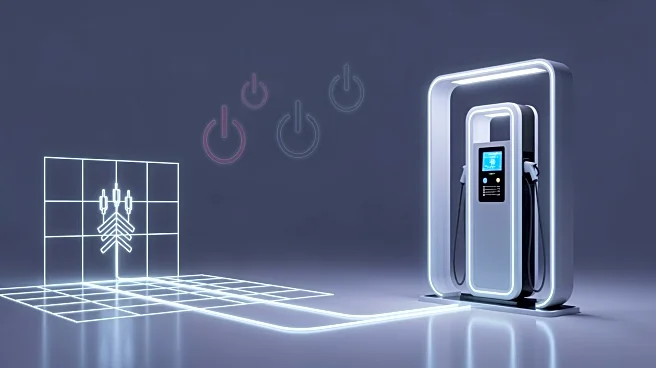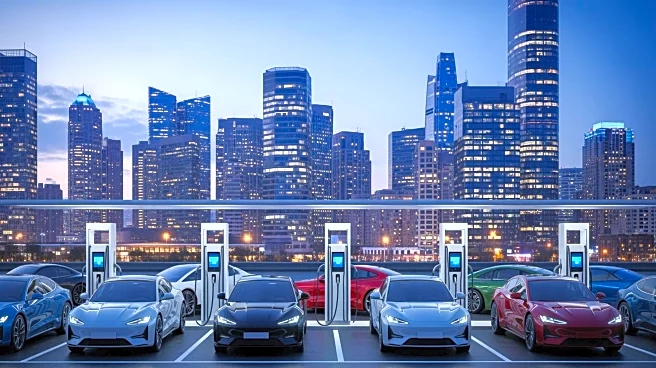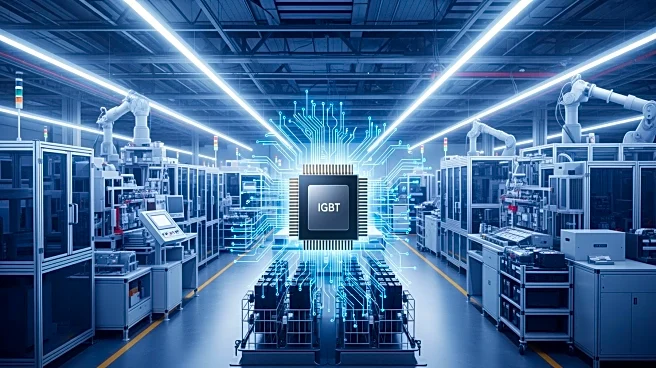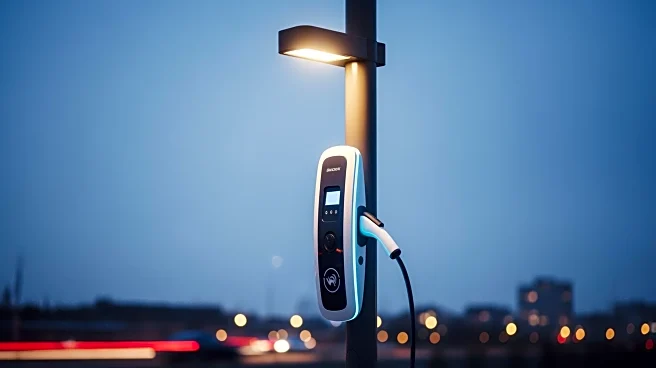What's Happening?
The Conference of the Electric Power Supply Industry (CEPSI) 2025, part of the Asia Clean Energy Summit at Singapore International Energy Week, highlighted the intersection of electric mobility and power
infrastructure. A key exhibit featured the Maxus eTerron 9 electric pickup truck, showcasing its vehicle-to-load (V2L) technology. This technology allows the vehicle to provide up to 6.6 kW of external power output, useful for equipment operation and emergency lighting during grid disruptions. The eTerron 9, with its 325 kW dual-motor configuration and 102.2 kWh battery, was presented as a mobile energy storage solution, emphasizing its role in grid support rather than just transportation. SP Group, Singapore's utilities provider, demonstrated the charging infrastructure, highlighting bidirectional power flow capabilities. The exhibition also addressed commercial fleet needs, with discussions on payload specifications and a planned Utility trim variant targeting higher payload capacities.
Why It's Important?
The presentation of the Maxus eTerron 9 at CEPSI 2025 underscores a significant shift in how electric vehicles (EVs) are perceived within the energy sector. By positioning EVs as grid-connected energy assets, the industry is exploring new avenues for enhancing energy resilience and decentralizing power systems. This approach could lead to more robust energy infrastructures capable of withstanding disruptions. For commercial fleet operators, the ability to use EVs as mobile power sources could reduce operational costs and improve energy efficiency. The development of higher payload variants also addresses regulatory compliance and operational needs, potentially expanding the market for electric commercial vehicles.
What's Next?
As the industry continues to explore the integration of electric vehicles into power grids, further advancements in V2L technology and charging infrastructure are expected. Stakeholders, including power utilities and vehicle manufacturers, may collaborate to develop standards and regulations that facilitate the widespread adoption of grid-connected EVs. Additionally, the introduction of the Utility trim variant of the eTerron 9 could attract interest from commercial fleet operators seeking to enhance their operational capabilities while adhering to environmental regulations.
Beyond the Headlines
The shift towards viewing electric vehicles as integral components of the energy grid could have long-term implications for energy policy and urban planning. As cities aim to become more sustainable, the integration of EVs into the energy infrastructure could support efforts to reduce carbon emissions and improve air quality. This development also raises questions about the future of energy storage solutions and the role of renewable energy sources in powering urban centers.












